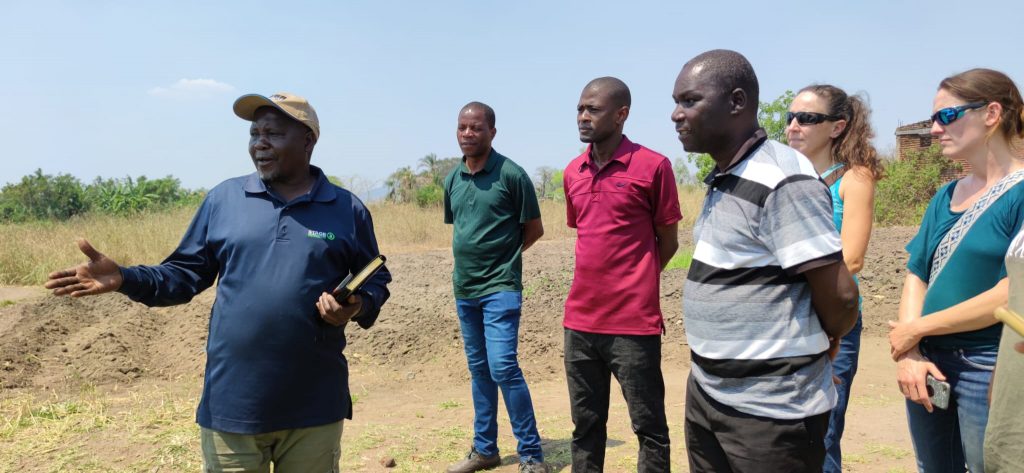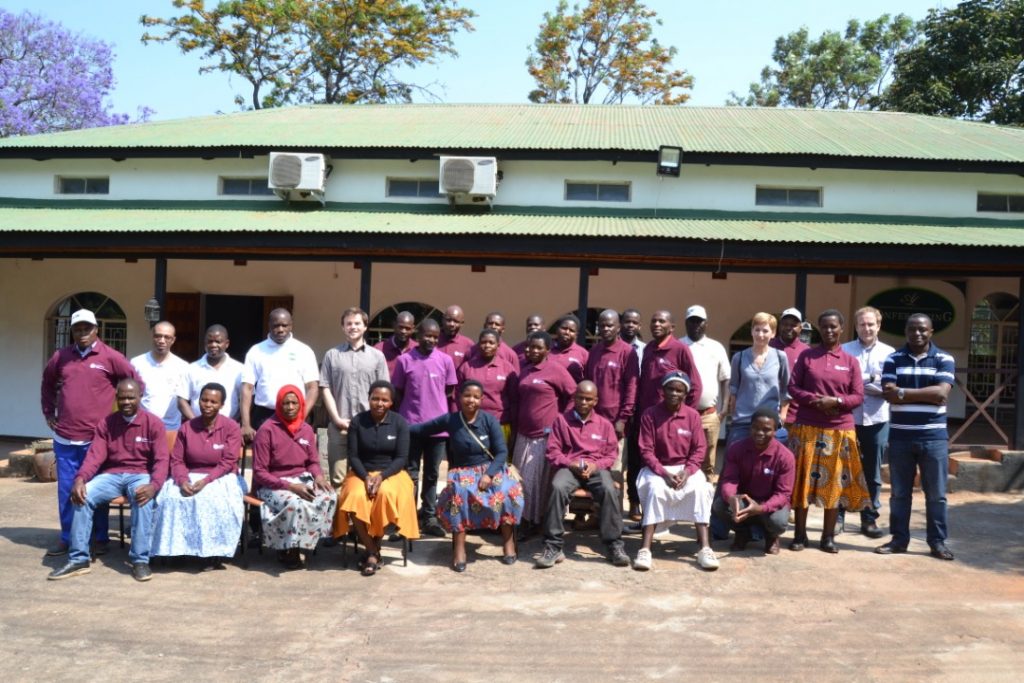Dragana Bojovic (on behalf of the CS2 team)
The final FOCUS-Africa 2022 country mission took place in Malawi from 3-12 October. The mission included partners involved in the Case Study on Climate Services for Food Security (CS2) and the Case Study on Climate Services for Energy and Water in Malawi (CS7). The mission started in Blantyre, Malawi where both teams met with the colleagues from DCCMS. The two teams then continued separate meetings with stakeholders, keeping joint evening briefings over delicious Malawian dinners.
From local knowledge to climate science: co-creating information for food security in Malawi
With the support of the National Smallholder Farmers Association of Malawi (NASFAM), the CS2 team had two focus group discussions with altogether more than 40 farmers and extension workers from Zomba and Phalombe. We spoke with local farmers about various topics, from the staple crops production and local agricultural knowledge to climate change impacts and vulnerabilities and the use of climate information. The farming practice is passed on through the family, but new agricultural approaches, such as moist and soil conservation practices, are learnt from extension officers who are in direct contact with lead farmers, who further share the knowledge and information with all other farmers in their villages.

Changes in the rainy season and the onset start day concern farmers and drought was perceived as the most severe problem. In the past, October was the month when the rainy season would start, but nowadays there is no fixed date or month for the onset. Consulting seasonal forecast can hence help decide what and when to plant. NASFAM shares seasonal forecast produced by DCCMS through WhatsApp and SMS. Seasonal forecast downscaled to all the districts in the country is printed and shared as a poster in Chichewa, so that everyone in the village can see it. According to the focus group participants, the trust in the seasonal outlook has improved, although some years are peculiar, and the start of the season is not well predicted. Farmers also agreed that the forecast should be released earlier, to give time to select the crop, e.g., opt between early- and late-maturing crops, and decide how to prepare the land according to the expected season. There were also suggestions to provide updates of the forecast throughout the rainy season, or even throughout the year.
Traditional knowledge was important for both Zomba and Phalombe district. In Zomba, farmers observe the wind direction which can suggest whether the rain would come, grasshoppers and some birds can serve as messengers of the rain, and some plants’ sprouting could also imply the start of the rain. In Phalombe, it was mentioned that an open spiderweb means it will be dry, while the web with a spider announces rain. Many fruits on a mango tree imply there will be drought: “[through mango] God gives alternative to crop production”.

In the following days, the CS2 team met with representatives of 10 stakeholder institutions in Lilongwe and the Chitedze Agricultural Research Station. Among these stakeholders, the team identified future fellow-users and elements of the CS2 trial climate service of particular interest for food security in Malawi. The interviews with the representatives from the stakeholder institutions confirmed some of the findings from the focus groups, e.g., drought was pointed out as the key challenge to secure food by all the interviewees. Most of the interviewees already use seasonal forecasts provided by DCCMS and everyone agreed that the onset and duration of the rainy season is important information to decide which crop and when to plant. Everyone shared farmers’ suggestion for an earlier release of the seasonal outlook. A related request was for seasonal forecast updates. The interviewed stakeholders were also interested in having some seasonal indices, like the amount of rain. Another index discussed was a pest index that could allow preparing for the invasion of – recently introduced and devastating for corn and other corps – fall armyworm (Spodoptera frugiperda). Namely, temperature plays a vital role in the performance of this insect, while our participants observed the link between the dry periods and outbreaks of this pest. Better climate predictions could hence also inform the risk of the pest invasion.
Seasonal forecasts are accompanied with impact content and concrete messages. The key role in preparing advice for farmers plays the National Agricultural Content Development Committee (NACDC), chaired by the Farm Radio Trust. Different institutions, such as DCCMS, NASFAM, FAO, Famine Early Warning Systems Network (FEWS NET), and the Department of Extension services participate in the NACDC, together with various content experts. The NACDC convenes four times per year to work on the preparation of the message for farmers in the context of the predicted season. The dissemination of the NACDC messages goes through the extension services and Farm Radio Trust – the key information channel for farmers in Malawi – which is connected to community radios.
Besides the clear interest in improving seasonal forecasts, some stakeholders were also interested in other elements of FOCUS-Africa climate services. For example, there is an information gap on annual timescale. Here the decadal predictions that FOCUS-Africa will present might inform planning decisions that usually have 5-10 years-span, supporting preparedness and climate change adaptation in agriculture. A few Interviewees also showed interest in longer term climate projections – another climate information that is being developed for Malawi within FOCUS-Africa. The lates generation of high-resolution climate projections could show if there is a long-term trend in the shift of the start and duration of the rainy season as well as a long-term warming trend.

The mission to Malawi accomplished its goal to strengthen the collaboration between the partners involved in CS2 and advance interactions with the key fellow-user, NASFAM. Close 10-day collaboration with the partners from DCCMS advanced the understanding of how FOCUS-Africa can complement and improve existing services. We also managed to speak with almost all the case study stakeholders from Malawi. The focus group discussions with farmers and interviews with stakeholders provided a plethora of information to launch the coproduction process and shape the CS2 trial climate service to address user needs and existing information gaps in Malawi. The user needs span from improving the current provision of the seasonal climate outlook through an earlier release and forecast updates to provision of seasonal indices. Furthermore, the team also identified other potential fellow-users who were interested in receiving and trialling FOCUS-Africa climate services. Some of them showed interest in climate information on decadal and longer timescale. The mission follow-up collaboration will explore how FOCUS-Africa could support an earlier release of the seasonal outlook as well as its updates. Improving the onset calculation is another aspect where the collaboration between scientists from different institutions, participating in CS2, has already started. Dissemination of the future CS2 trial climate service is another domain where all the partners need to collaborate, merging the expertise in technical, visual and communication aspects of the service dissemination. DCCMS’s links with parallel initiatives in Malawi will help maximise the added value of the FOCUS-Africa service that should complement the existing efforts for a more sustainable and secure agriculture in Malawi.

